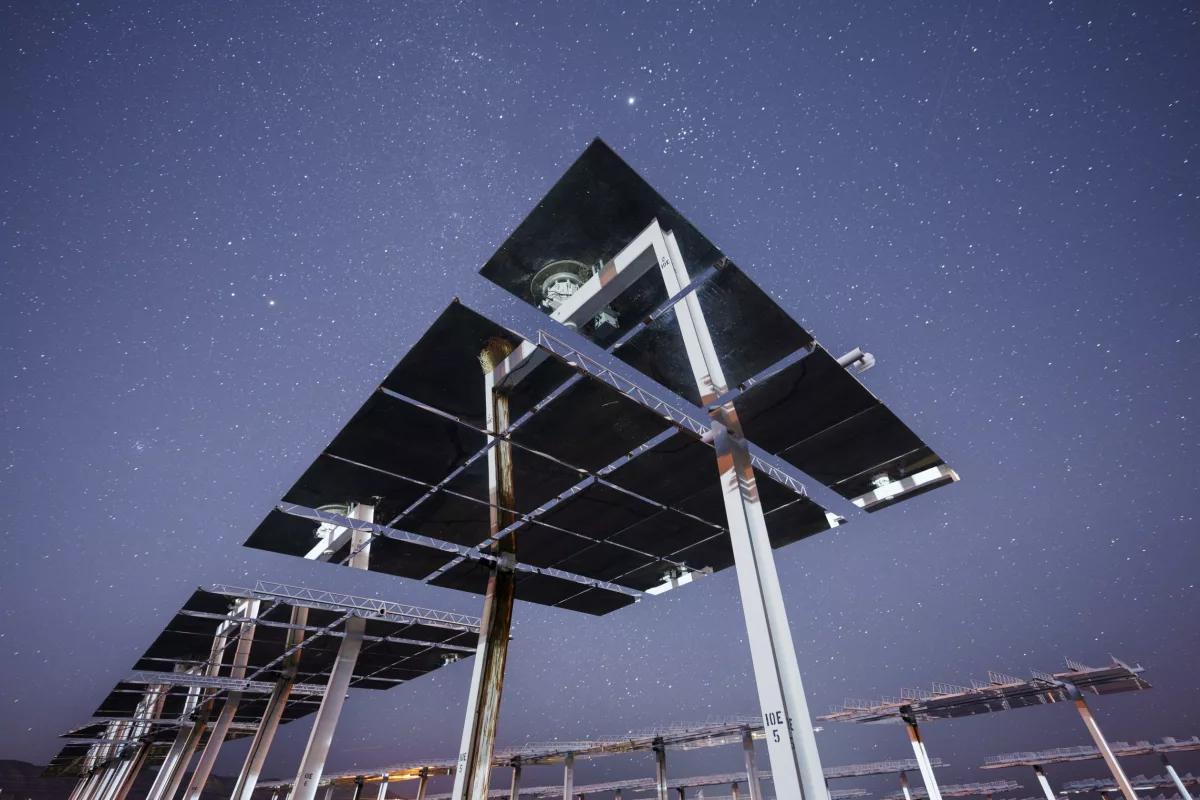In a groundbreaking initiative, scientists at Sandia National Laboratories are transforming solar power technology to enhance asteroid detection capabilities. Researcher John Sandusky is experimenting with heliostat mirrors at the National Solar Thermal Test Facility in Albuquerque, New Mexico, aiming to utilize these structures during nighttime, a period traditionally unproductive for solar energy generation.
The facility features a 200-foot-high concrete tower surrounded by 218 mirrors that track the sun’s rays to generate an impressive 6 MWt of power during daylight hours. However, once the sun sets, these systems cease operation, producing no power until dawn. This limitation sparked Sandusky’s innovative approach: could these mirrors be repurposed for a different task when they are otherwise idle?
Innovative Approach to Asteroid Detection
As part of a Laboratory Directed Research and Development project, Sandusky programmed one of the heliostats to track objects in the night sky, akin to a telescope. This method allowed for the projection of reflected energy onto optical instruments located on the tower. Although the energy output registered only a femtowatt, the technique facilitated conditions suitable for detecting asteroids.
Traditional asteroid detection relies on optical telescopes that capture long-exposure images of the sky. In these images, stars appear as points of light, whereas asteroids manifest as streaks, helping astronomers assess their size and trajectory. Yet, the vastness of the sky and the limited number of telescopes means many asteroids remain undetected, often discovered by dedicated amateur astronomers.
With the increasing recognition of asteroids as both valuable resources and potential threats to Earth, the demand for improved detection methods has escalated. Sandusky’s technique diverges from conventional imaging; instead of visual streaks, it captures the photocurrent power spectrum of incoming light at sub-milliHertz resolution. This allows for the identification of objects such as asteroids or spacecraft through frequency shifts in the background starlight.
Potential Applications and Future Developments
While the current method does not produce visual images, its ability to detect changes in motion could serve as a cost-effective supplement to NASA’s Asteroid Terrestrial-impact Last Alert System (ATLAS). This system is critical for identifying potentially hazardous asteroids. Sandusky also noted that the technology could extend to military applications, aiding defense agencies in monitoring clandestine spacecraft operating within cislunar space.
“We’re looking for opportunities to scale up from one heliostat to many and try to demonstrate that we can help find near-Earth objects,” said Sandusky. “We also want to demonstrate we can scale up the technology to detect even smaller asteroids.”
The research findings were shared at a recent conference hosted by the International Society for Optics and Photonics, highlighting the potential of this innovative technology in both scientific and practical applications. As the project progresses, Sandusky and his team aim to further develop this technique, promising exciting advancements in our ability to monitor and understand the cosmos.
